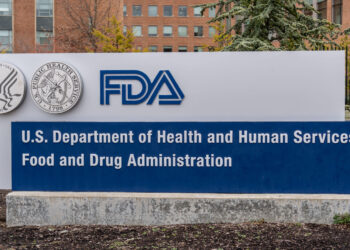A chronic shortage of radiologists and oncologists is putting patients in the UK at risk, a new report found.
The annual workforce census by the Royal College of Radiologists (RCR) warned that the safe delivery of NHS cancer care is becoming “increasingly impossible” due to an escalating shortfall of doctors coupled with rising demand for care.
In 2024, the UK had a 29% shortfall of clinical radiologists, with regional gaps ranging from 25% in Scotland to 32% in Wales. The workforce grew by 4.7% that year — less than in 2023, when it increased by 6.3%.
The college forecasts the radiologist shortfall will reach 39% by 2029.
Oncology Under Strain
Clinical oncologists are also in short supply, with a current 15% gap expected to rise to 19% by 2029. This is despite a 5.4% increase in the workforce in 2024—the strongest growth since 2018.
The RCR reported that 23% of cancer centres were experiencing recruitment freezes, making it harder to meet growing demand.
Demand Continues to Outpace Capacity
The shortages threaten the government’s plans to cut waiting times and improve cancer outcomes.
In 2024, demand for computerised tomography (CT) and magnetic resonance imaging (MRI) grew by 8%, but workforce growth did not keep pace. Every radiology leader surveyed last year reported delays to diagnostic scans caused by staff shortages.
Nine in 10 radiology team leaders reported that patients were waiting longer to start treatment, while seven in 10 expressed concern that staff shortages were putting patient safety at risk – down slightly from 85% in 2023.
Chronic problems such as workforce shortages, reporting backlogs, and staff vacancies remain too high, according to Dr Robin Proctor, the RCR’s m edical director responsible for professional practice and clinical radiology.
Consultants Leaving Earlier
Staff retention is worsening, with experienced consultants leaving the NHS at younger ages. In 2024, the median age of consultant clinical radiologists leaving the NHS workforce was 50 – down from 56 in 2020. Four in five (79%) of leavers were under 60, and two in five (42%) were under 45.
Clinical oncologists followed a similar trend. Their median exit age dropped to 54, from 57 in 2023 and 59 in 2022. Nearly 76% of leavers were under 60, and 26% were under 45.
One consultant clinical oncologist told the college that delays in scans and treatment were resulting in missed or late cancer diagnoses. Some patients’ conditions were deteriorating or reaching a stage where treatment was no longer possible.
Changing Work Practices
“Working conditions and ways of working need to change if we are to address this problem and meet the growing demand for our expertise,” Proctor said.
The RCR has called on the government to invest in training and recruitment.
In 2024, the NHS spent an estimated £325 million on temporary radiology staff. The cost of outsourcing had doubled since before the COVID-19 pandemic and had surged by almost a quarter in the past year.
The RCR estimated that increasing radiology trainee numbers by 50% could eliminate three-quarters of the current shortfall and save the NHS £460 million over the next 10 years.
“Patients are being failed by a chronic lack of radiologists and oncologists,” said RCR president Dr Katharine Halliday. “The longer we delay action, the worse it gets,” she added.
Rob Hicks is a retired National Health Service doctor. A well-known TV and radio broadcaster, he has written several books and has regularly contributed to national newspapers, magazines, and online publications. He is based in the United Kingdom.
Source link : https://www.medscape.com/viewarticle/radiology-workforce-shortages-impacting-cancer-care-2025a1000fax?src=rss
Author :
Publish date : 2025-06-06 11:13:00
Copyright for syndicated content belongs to the linked Source.














